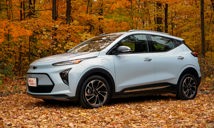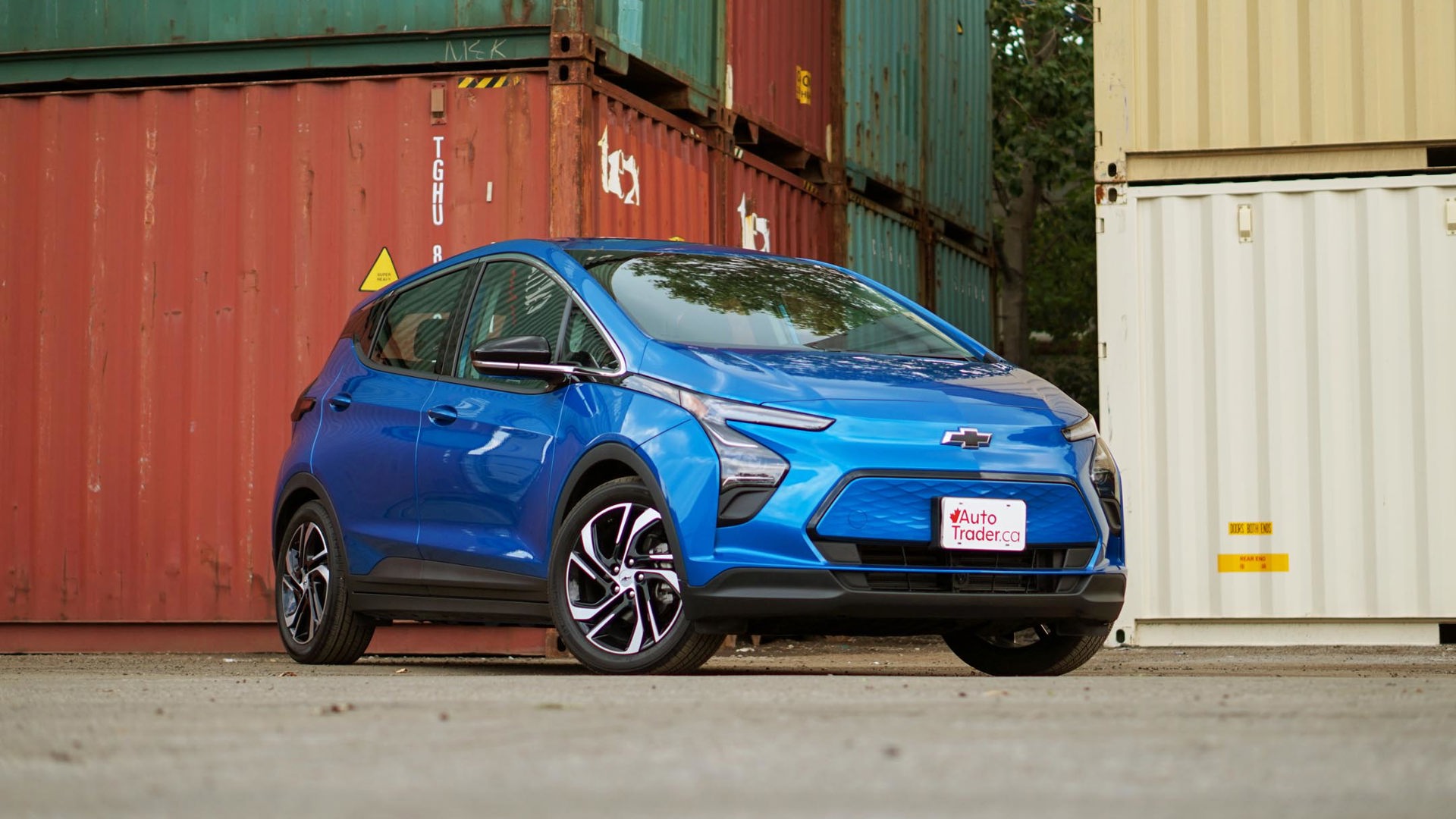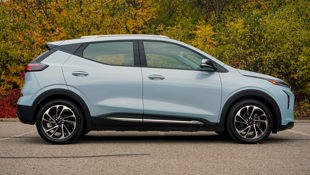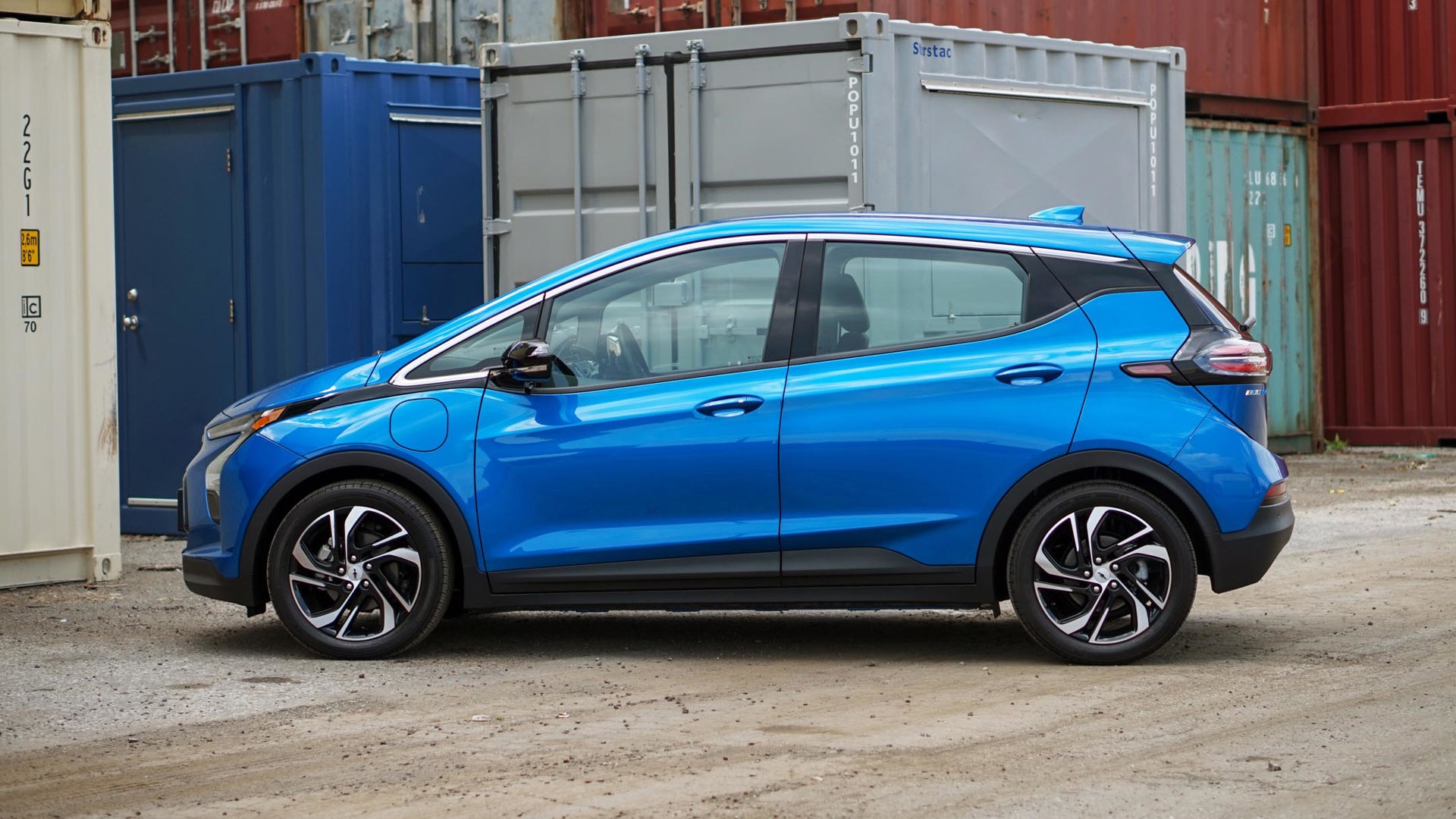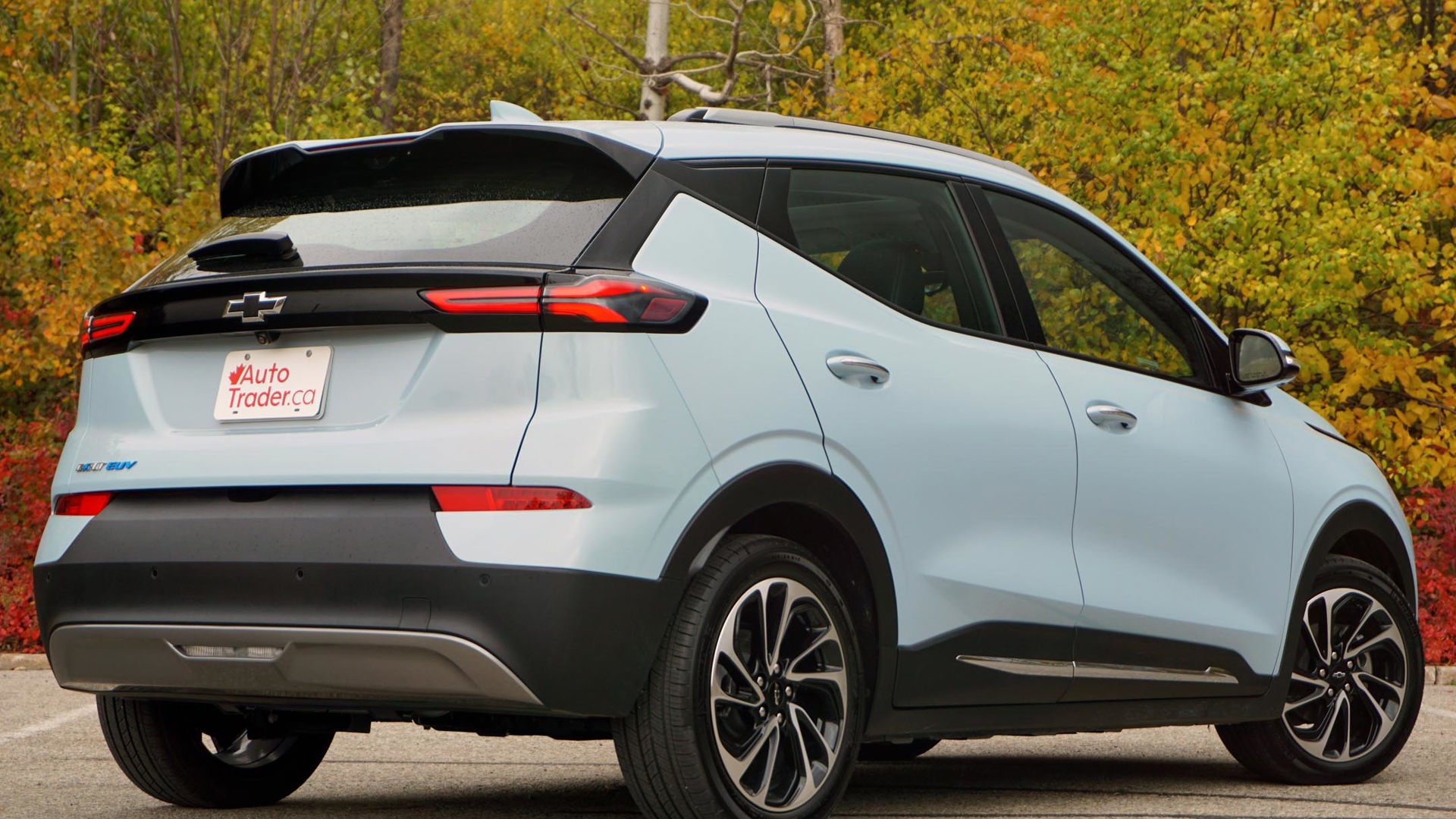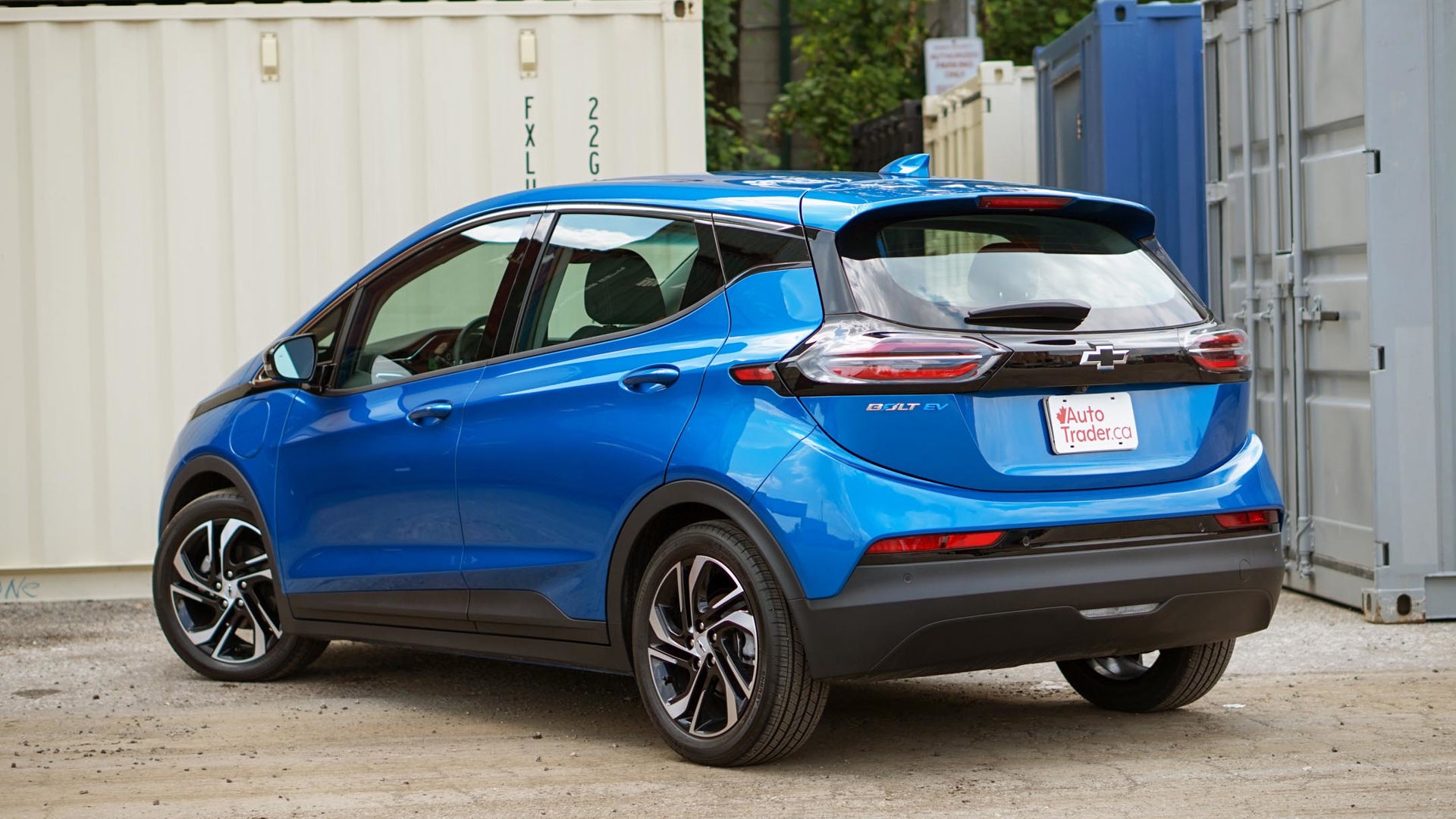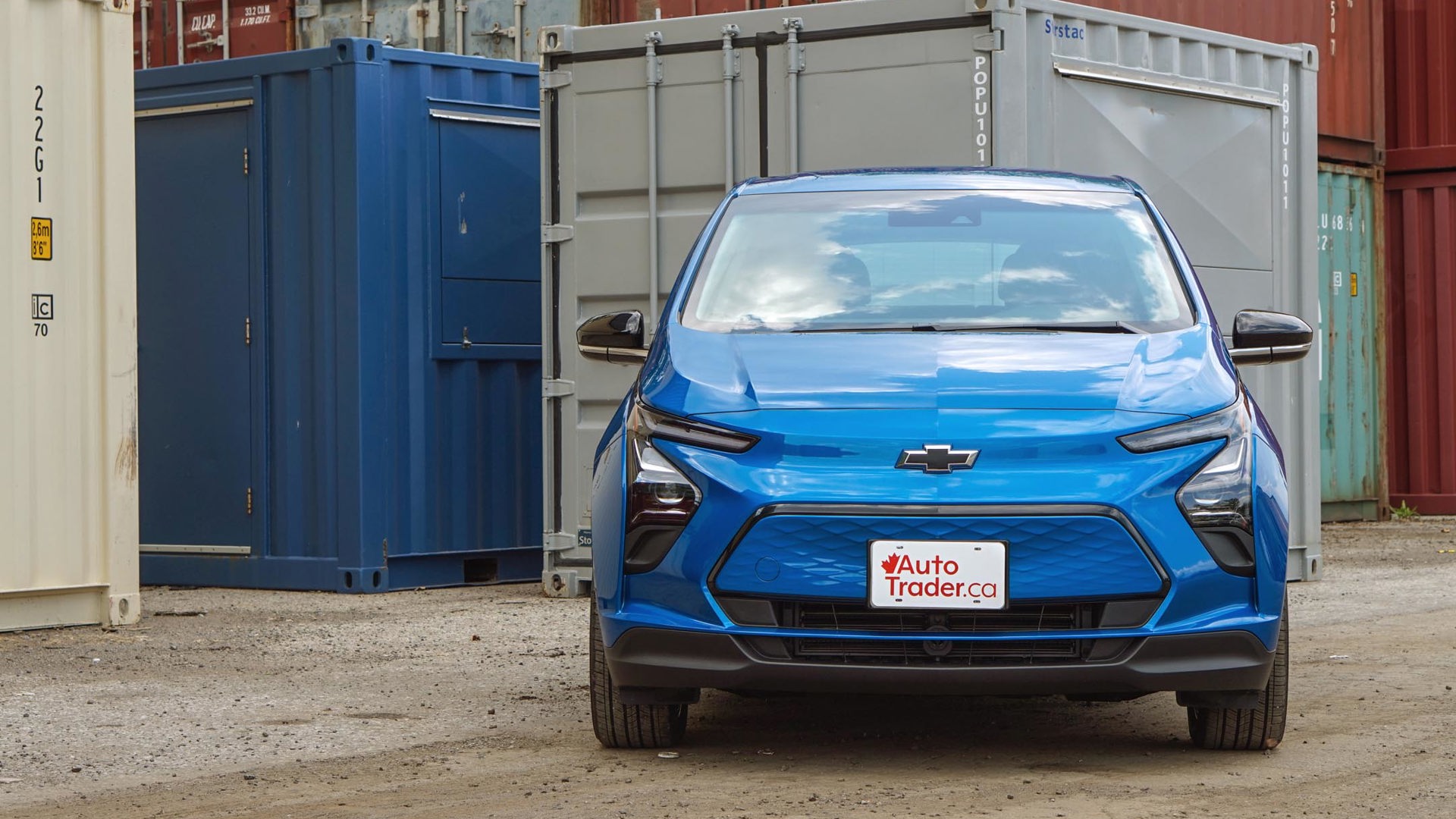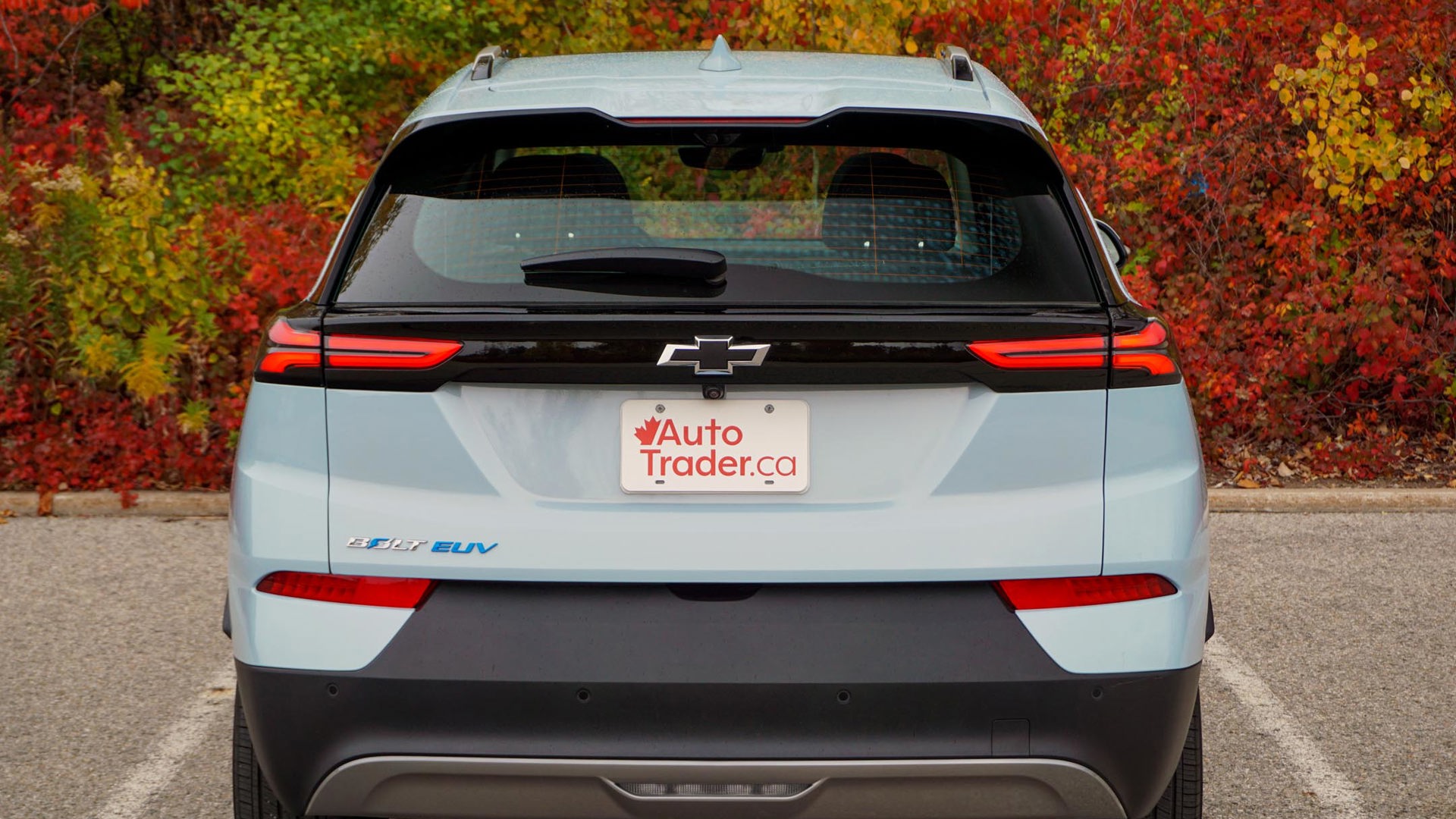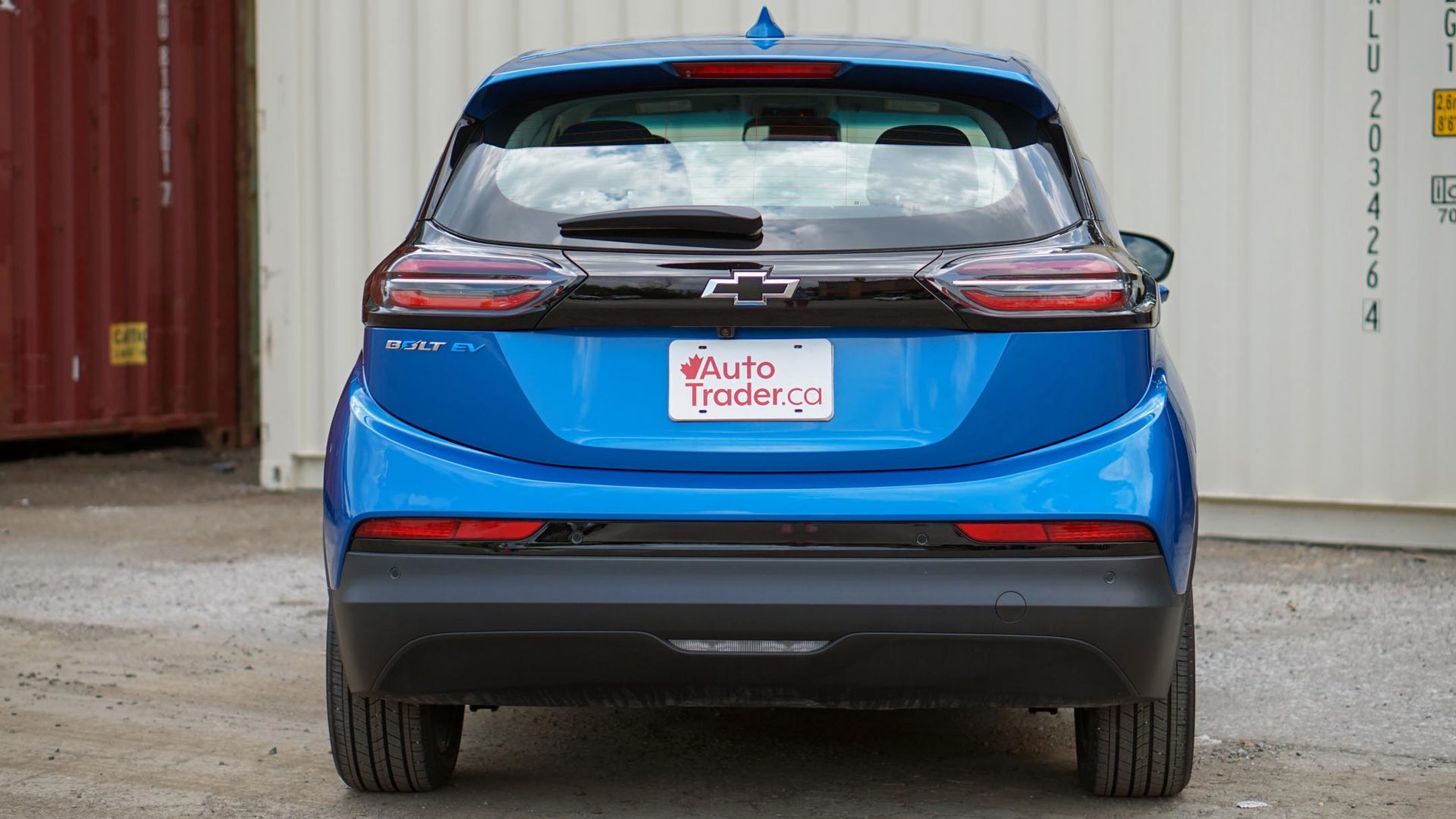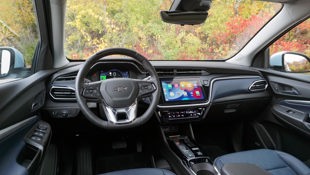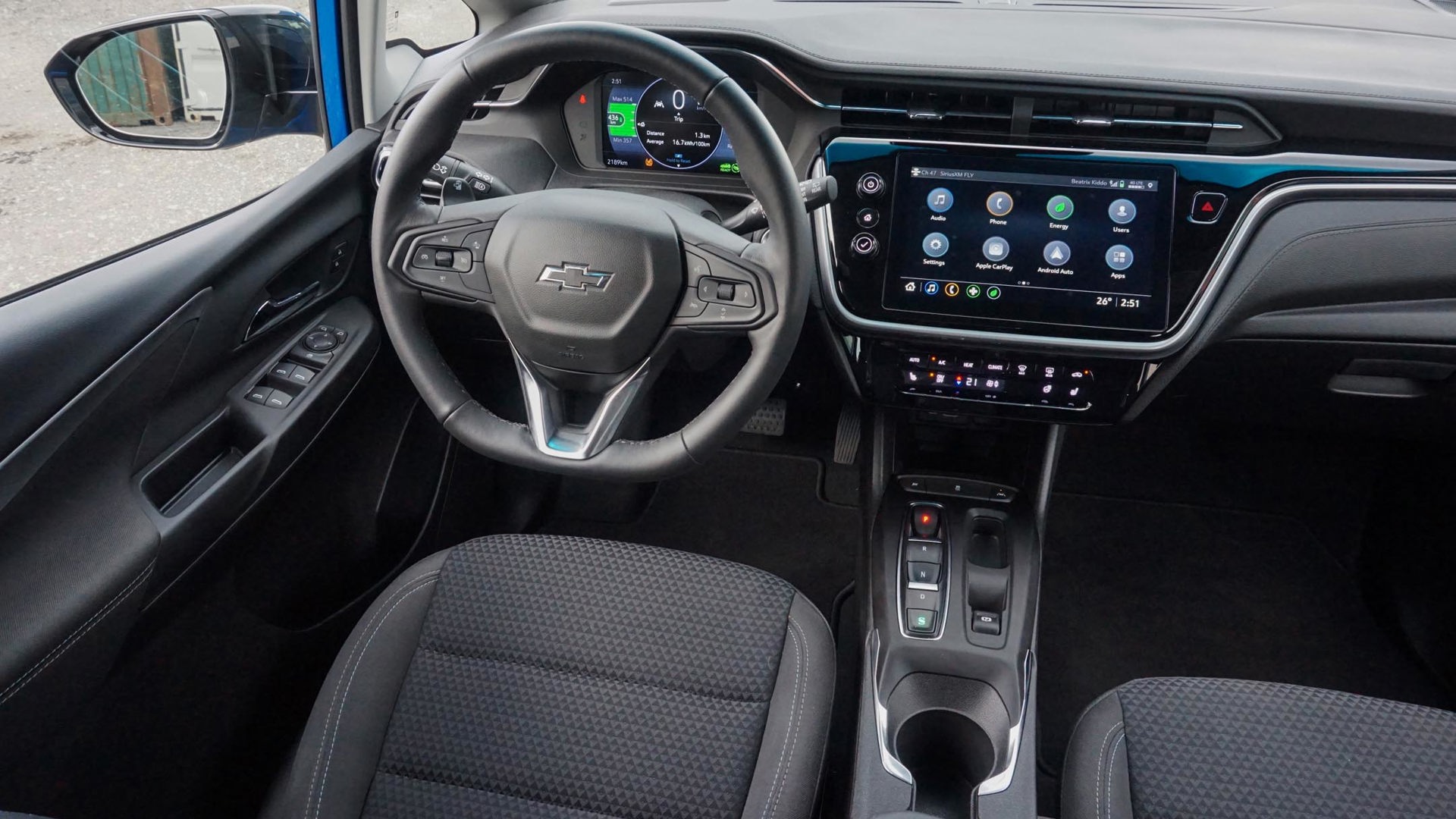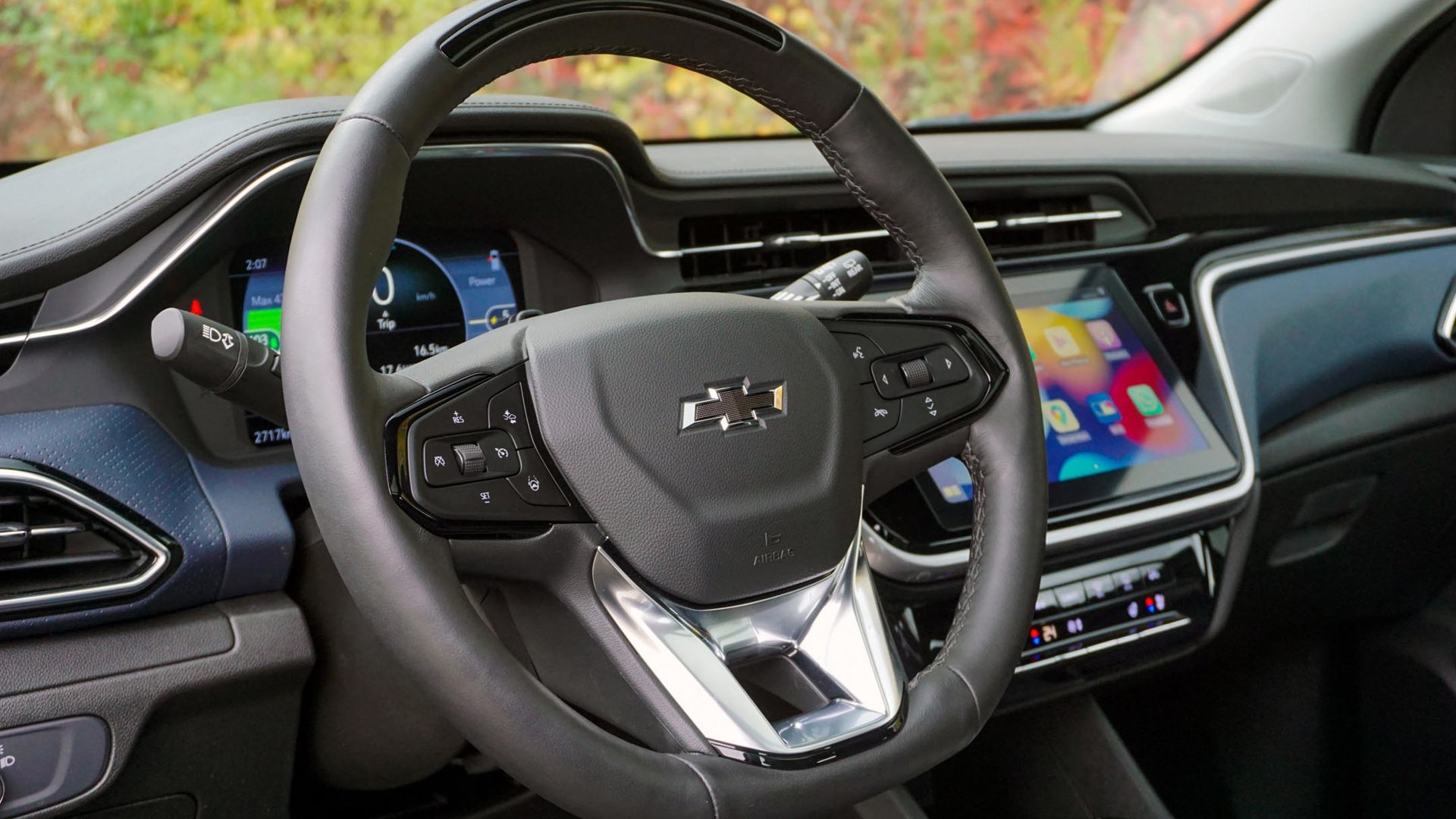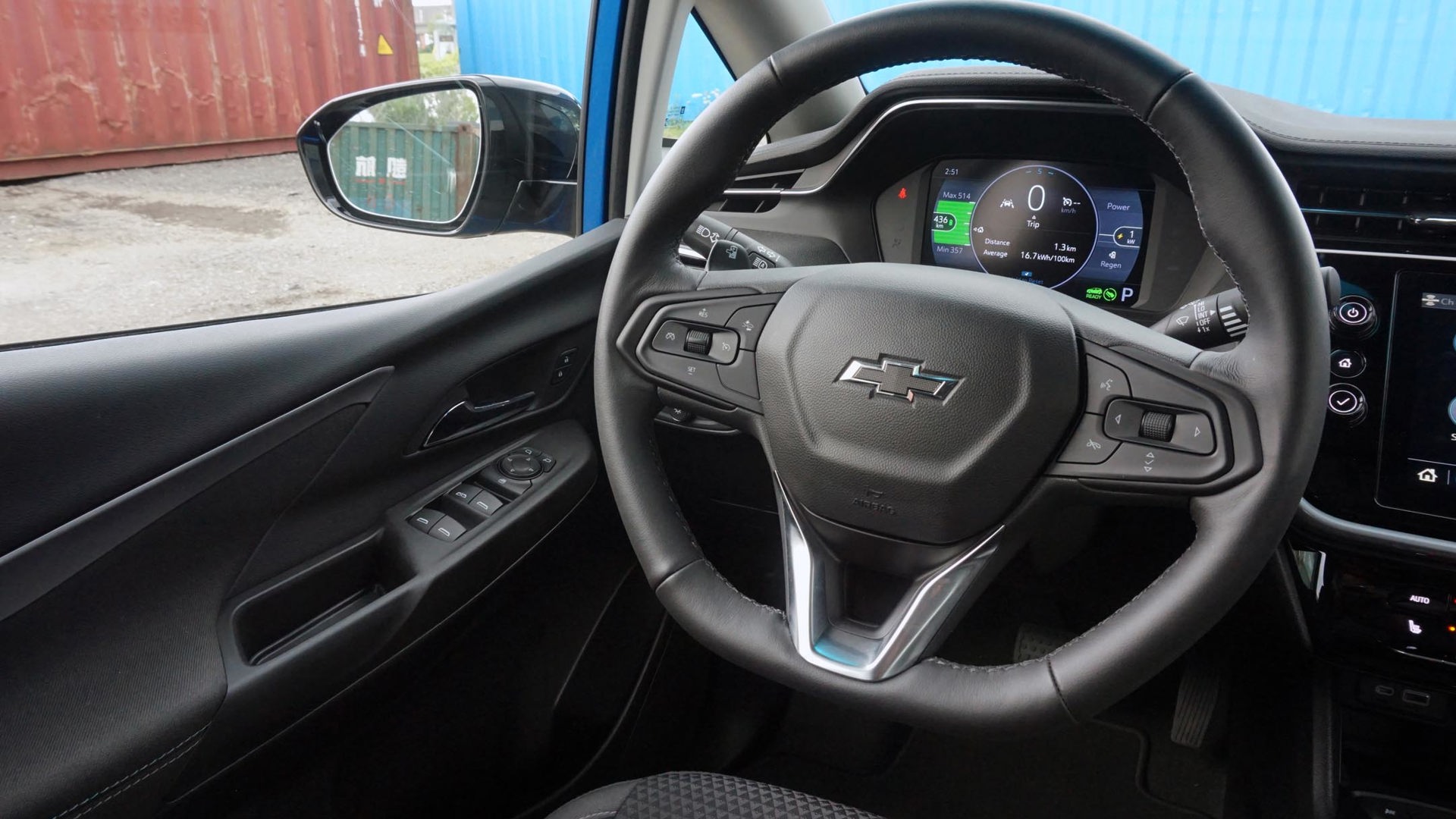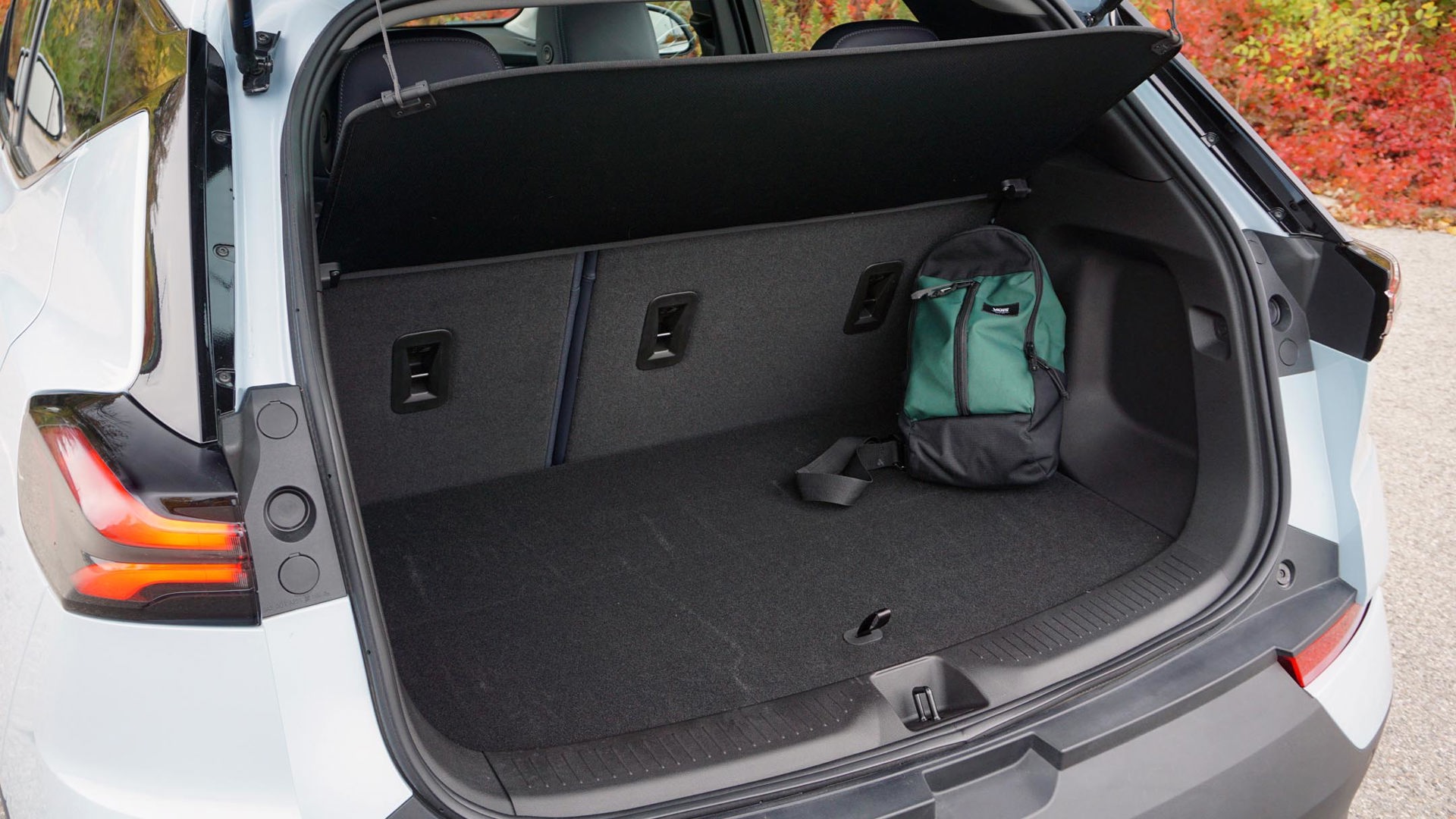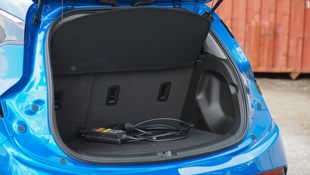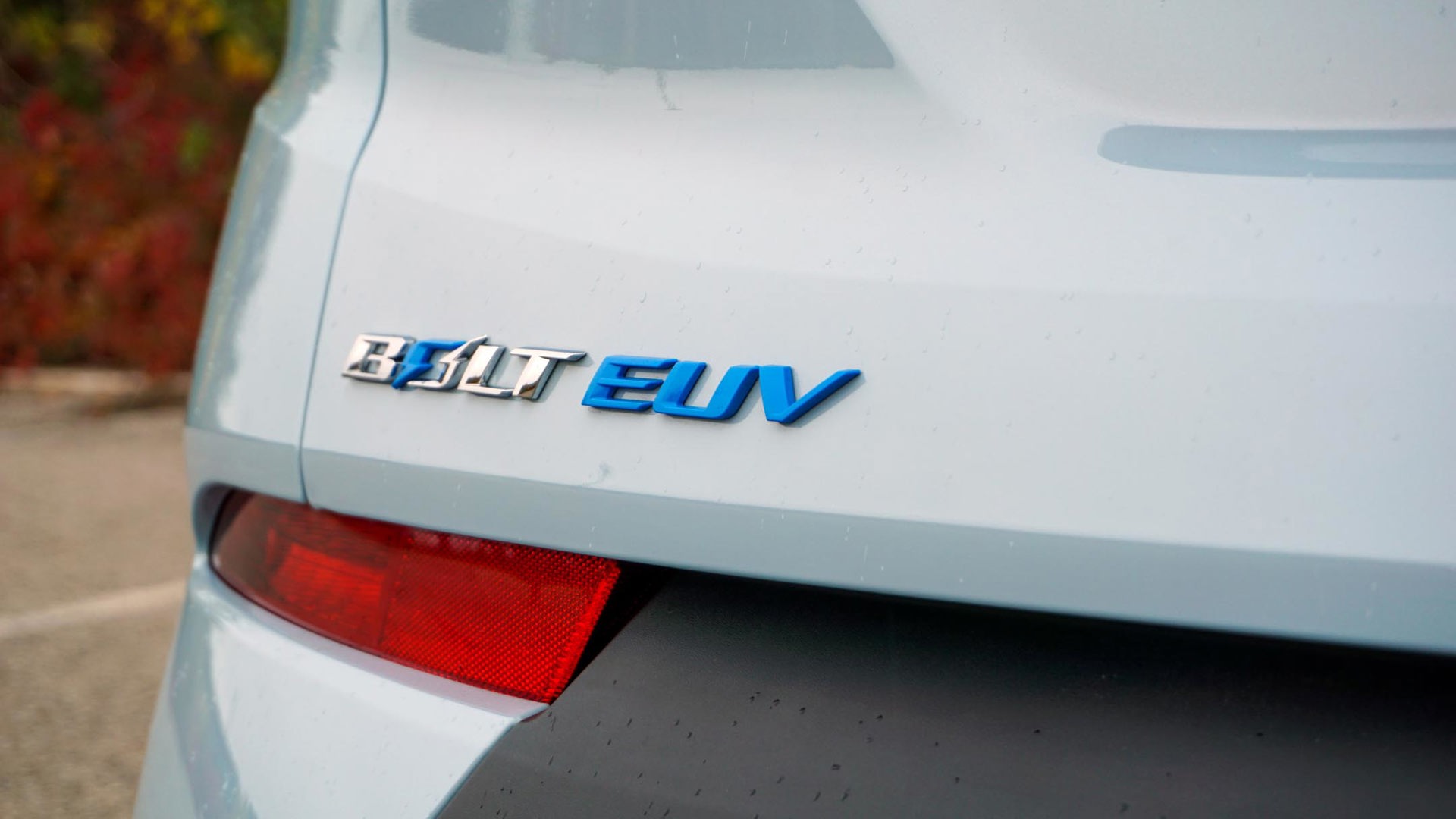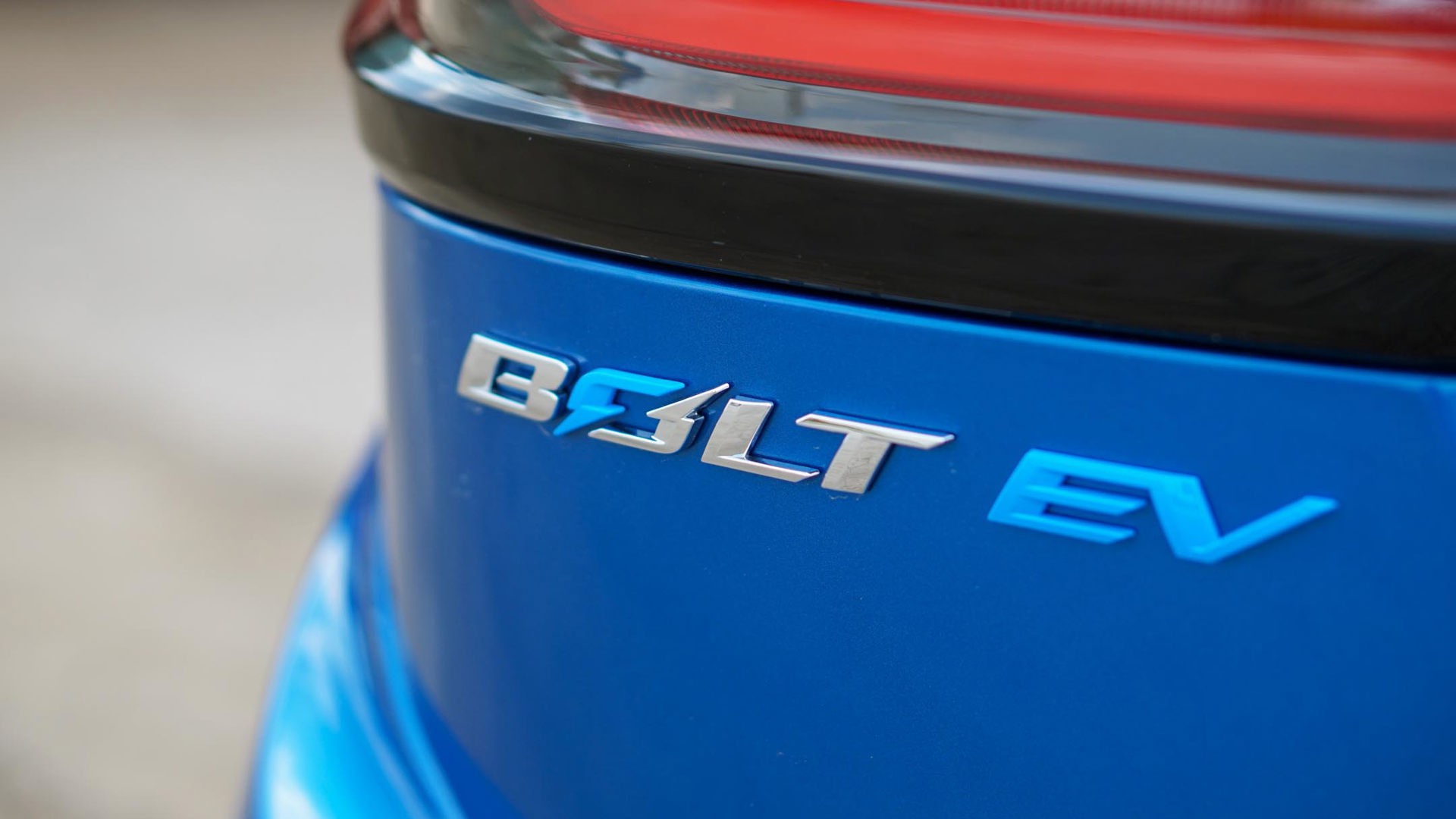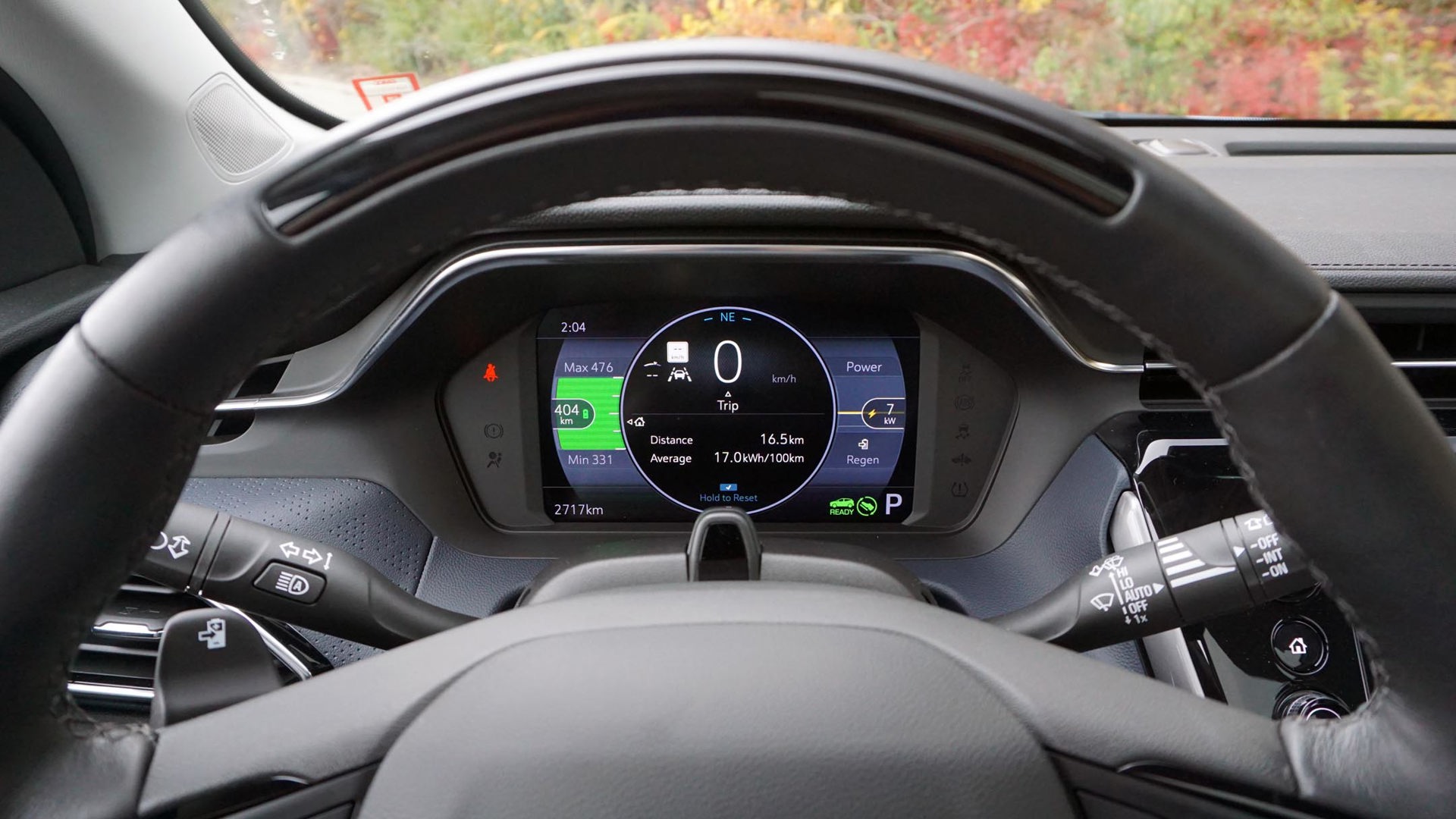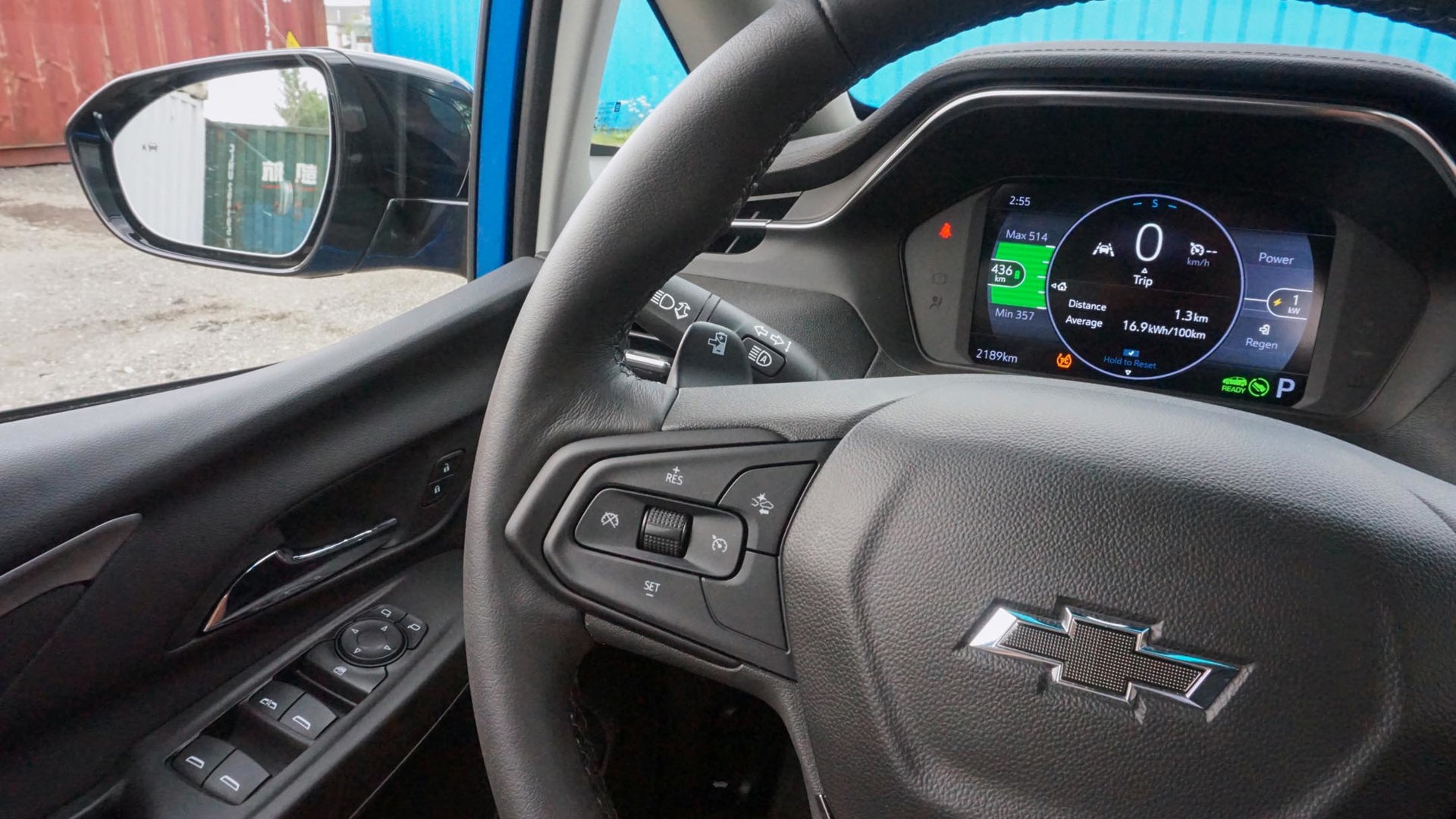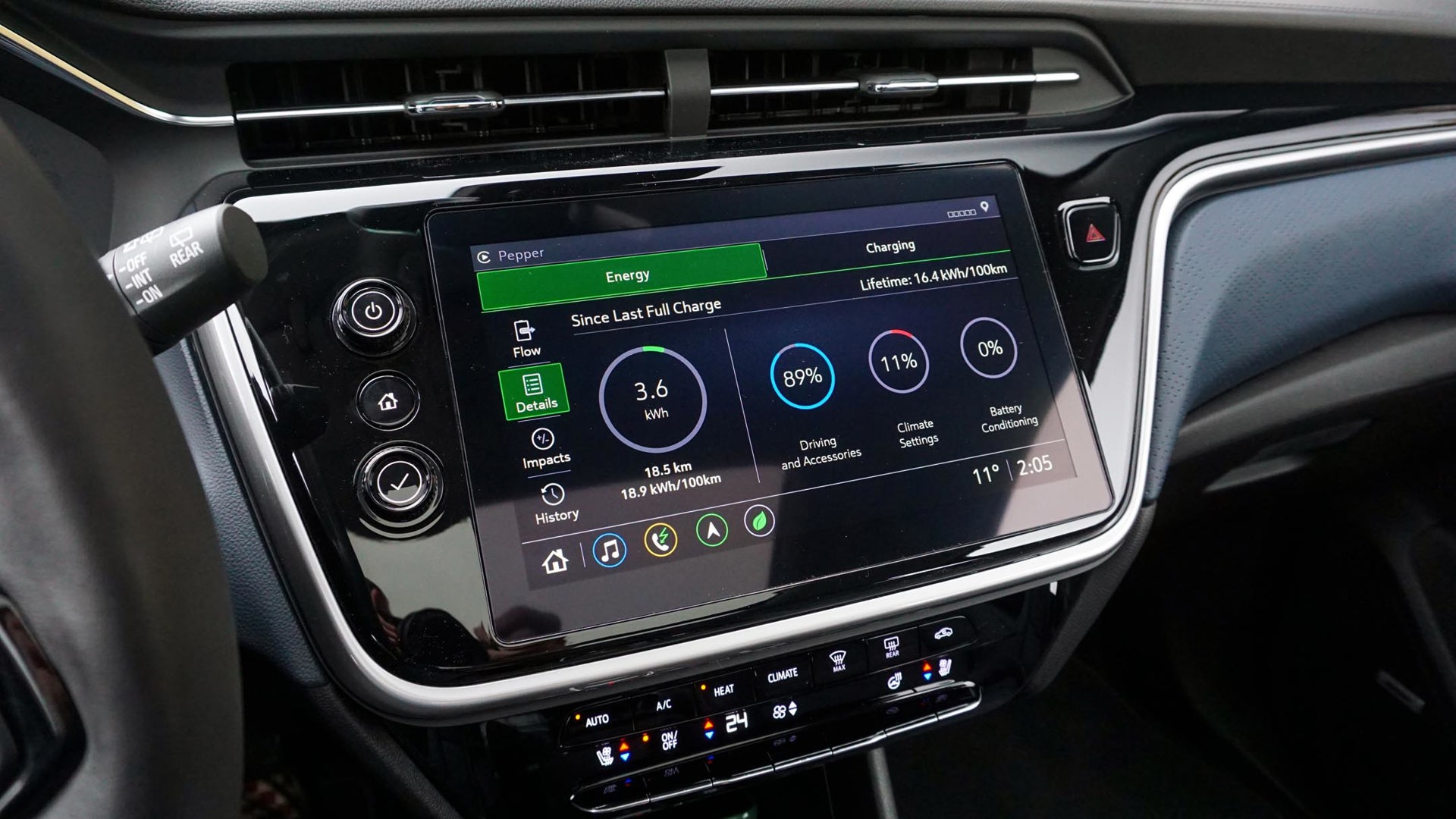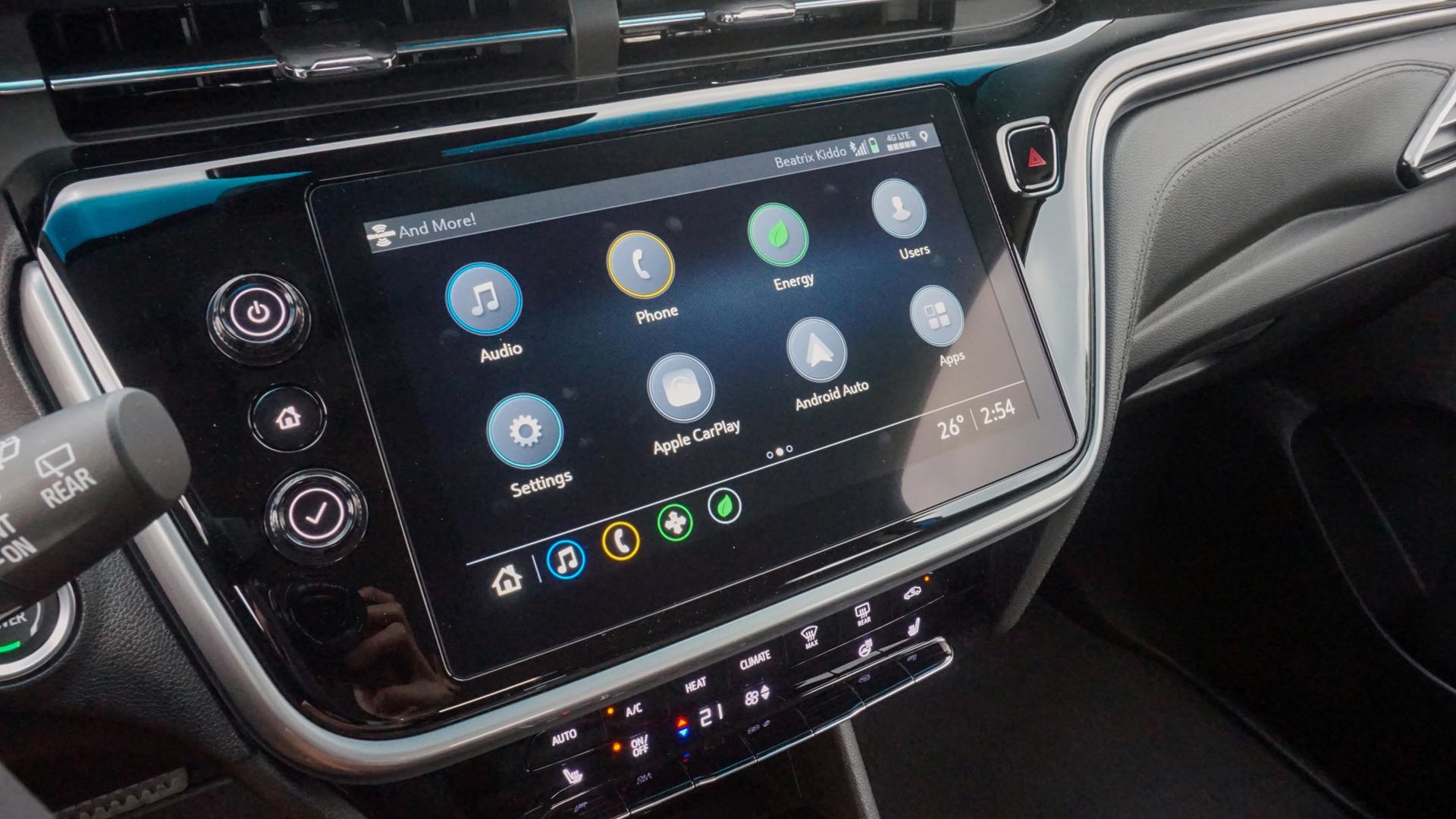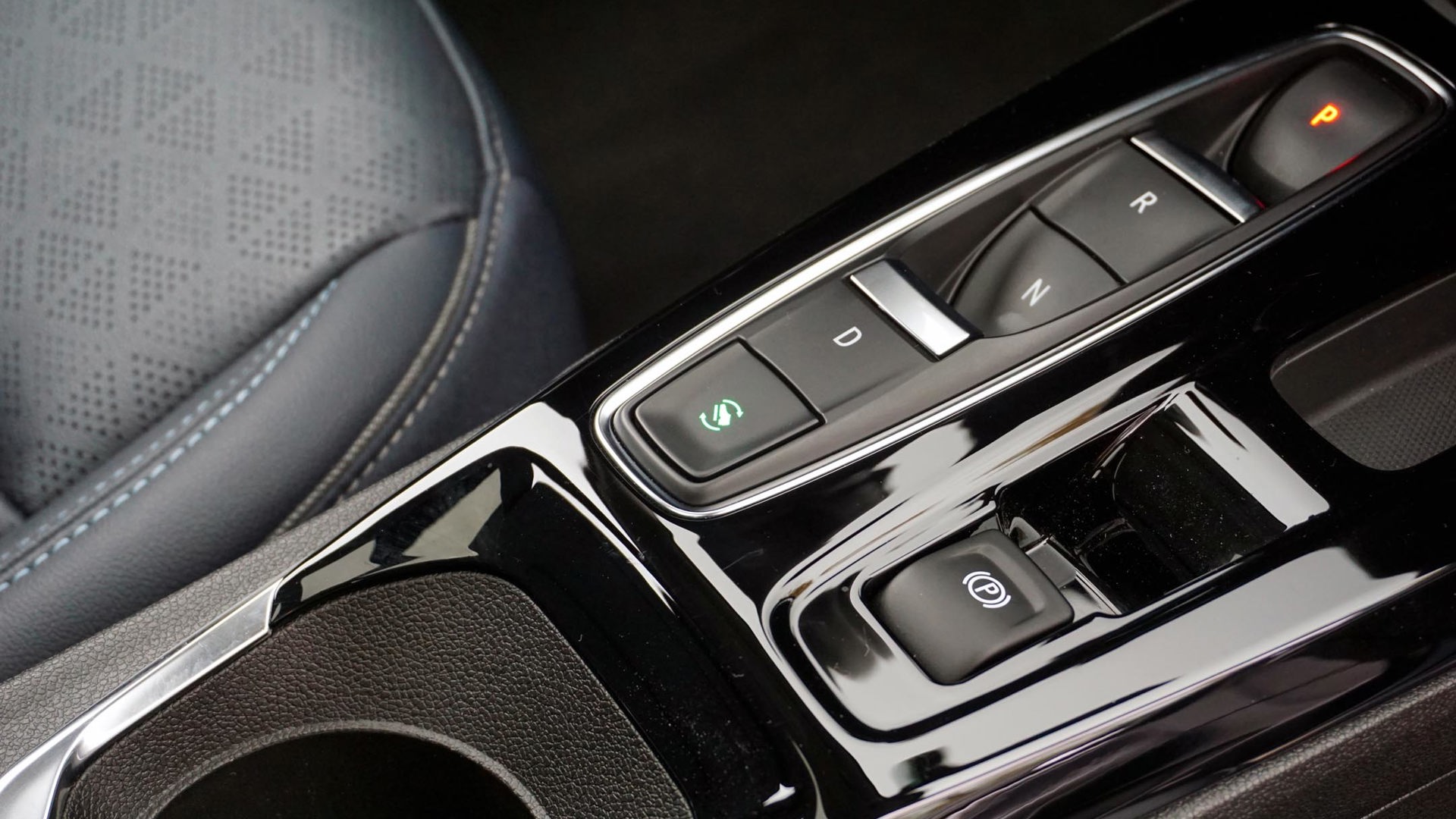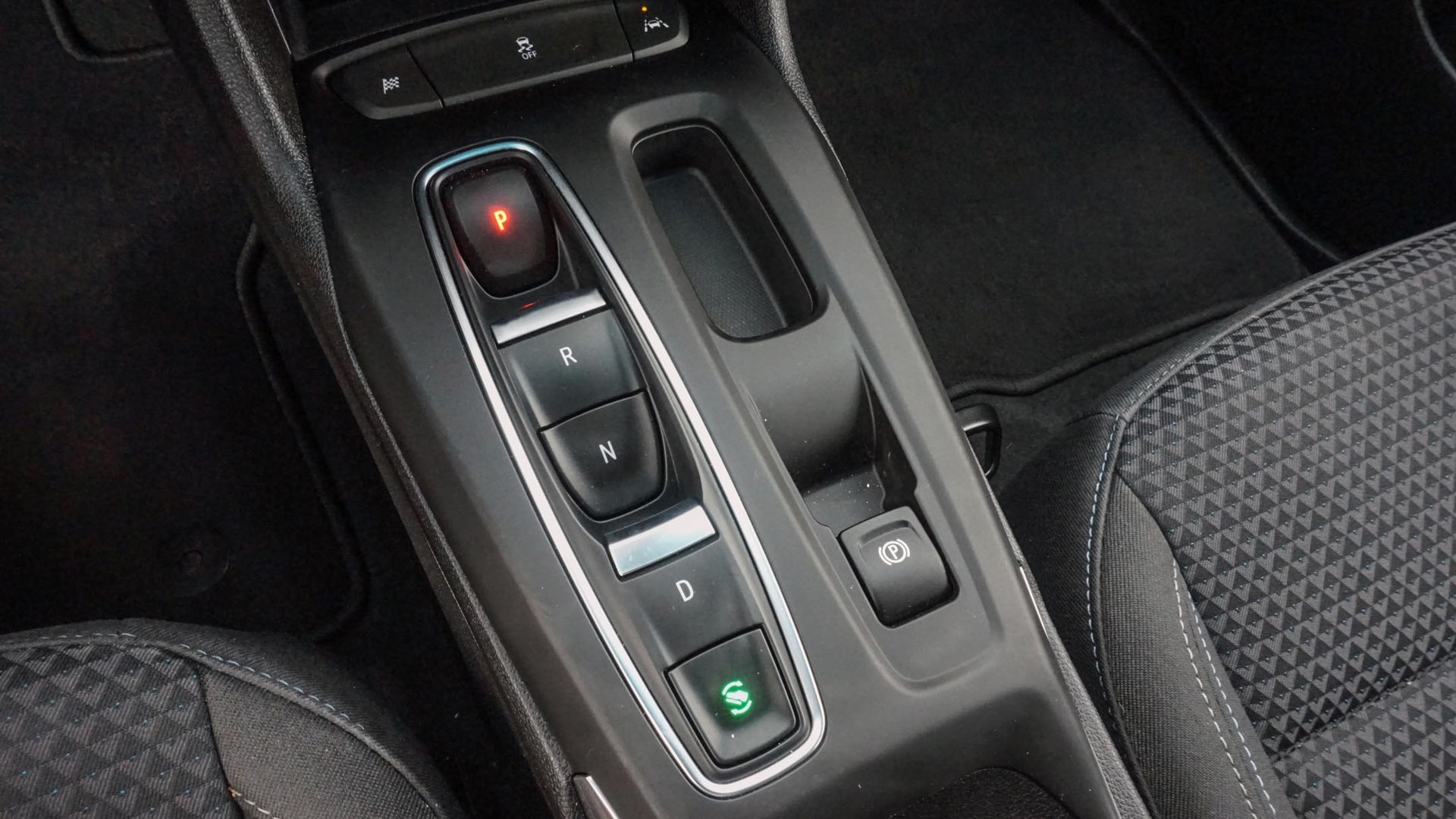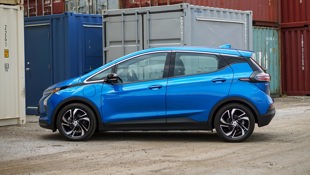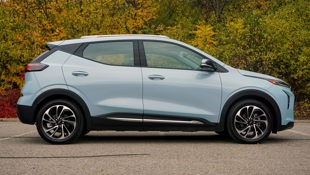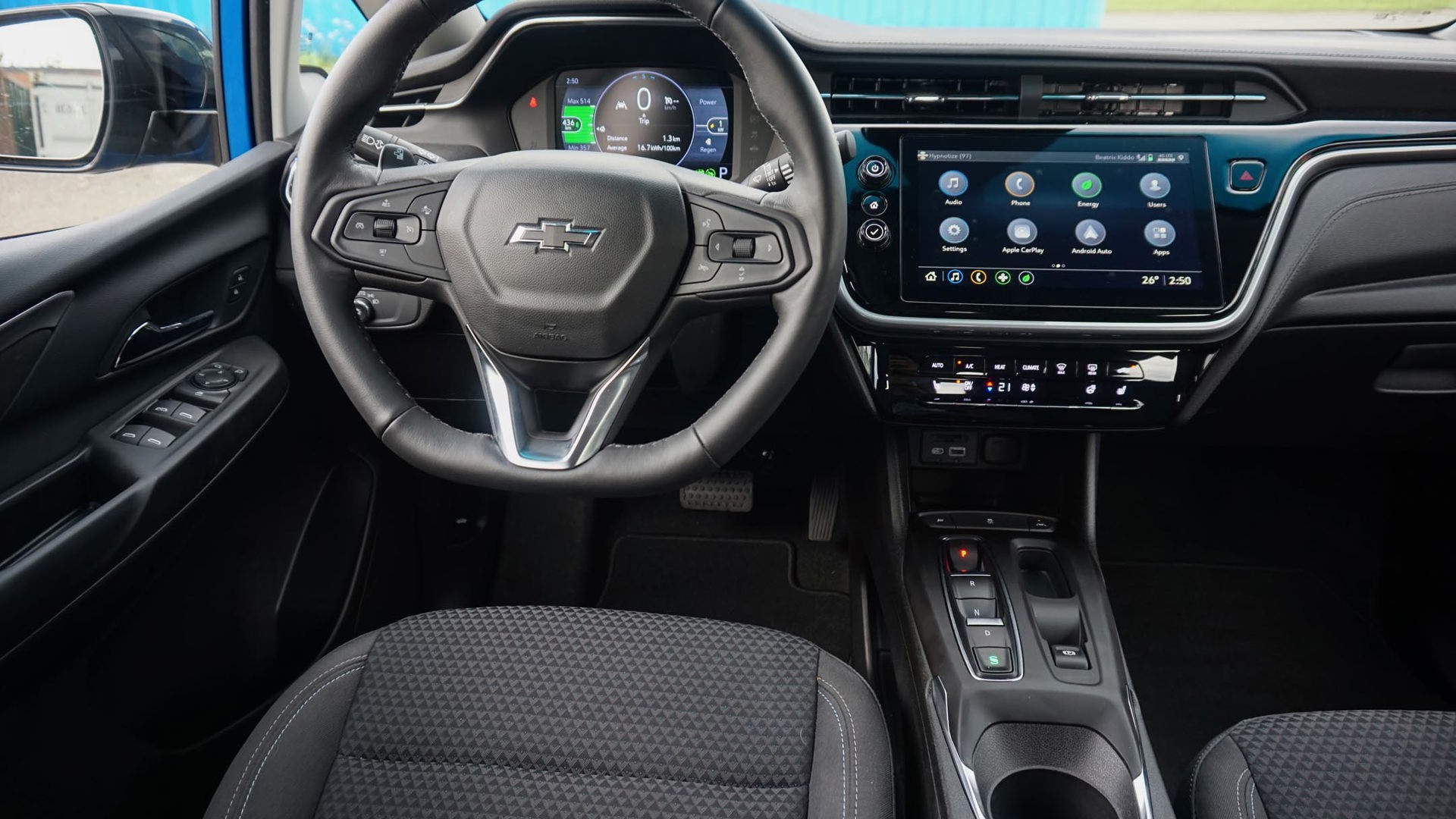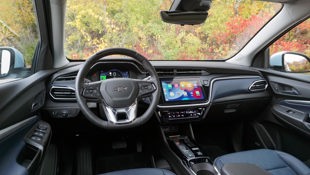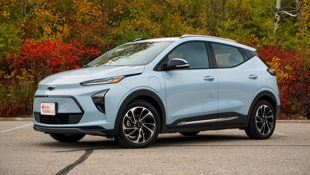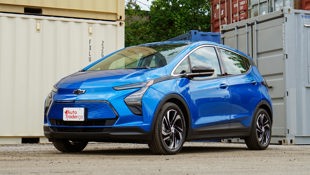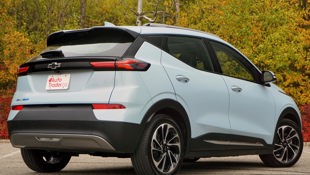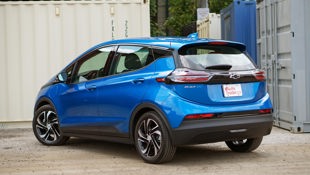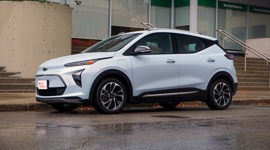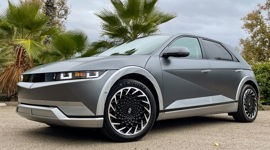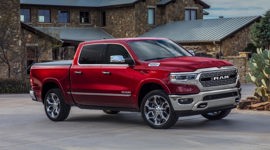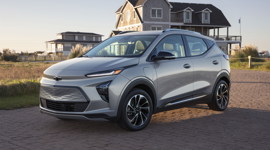For all the good stuff that the folks at Chevrolet get right – and there’s plenty worthy of praise – naming the brand’s vehicles isn’t among them.
It’s the electrified side of the showroom that has suffered most, or so it seems, with the Volt and Bolt living alongside one another to the chagrin of shoppers and sales staff alike. Sure, one was essentially a plug-in hybrid (PHEV) sedan and the other an all-electric hatchback, but discerning between the two in casual conversation still takes an acute ear. (Don’t believe me? Go ahead and say both aloud.)
Fast-forward a few short years, and the Volt has been discontinued while the Bolt lives on – albeit after a prolonged recall aimed at addressing battery fire issues. It’s also not alone, with another electric vehicle (EV) that doesn’t look too dissimilar also sporting the bowtie badge. And if that weren’t enough, there’s the name: the Chevrolet Bolt EUV, which is strikingly similar to its sibling’s proper title, the Chevrolet Bolt EV.
Puzzled? You aren’t alone. But beyond the extra letter squeezed into the suffix, there are some discernible differences between the two. With a 2022 Chevrolet Bolt EUV parked in the driveway for a week-long test, we decided to take the opportunity to outline what it shares with the Bolt EV, as well as what separates them.
What’s the Same?
Before we get to their differences, it’s worth covering what the Bolt and Bolt EUV have in common. Most of it is the stuff you can’t see, like the 65-kWh lithium-ion battery pack they both use, or the 200-hp motor that motivates them through their front wheels. When it comes to their electric underpinnings, this pair is quite literally identical in every way.
That means the same charging capabilities whether connected to a 48-amp Level 2 hook-up you might have installed at home (about seven hours for a full charge), or a DC fast-charger that can add 160 km of range in 30 minutes. On that note, this pair’s charging capacity leaves something to be desired, peaking at a rate of about 55 kW compared to, say, the retro-inspired Hyundai Ioniq 5 that can be hooked up to 350-kW stations.
Likewise, components like suspension, steering, and brakes are shared between the Bolt and Bolt EUV. That includes their torsion beam rear ends that are common amongst economy cars. Incidentally, the Kia Soul EV, which is probably this Chevy’s closest competitor, employs a multi-link setup in the back that better manages ride quality and comfort.
Beyond individual parts like the door handles and window switches, the essentials in their cabins are the same, too. That means the dashboard and its 10.1-inch touchscreen, the steering wheel and its regenerative braking paddle, and the centre console with its pass-through storage compartment carry over from one model to the next.
What’s Different?
It’s difficult to tell this pair apart from across a parking lot, but closer examination reveals some subtle aesthetic – and practical – differences. Start with the beltline of the Bolt EUV, which is far more conventional compared to the Bolt’s tapered version. It leads to a fairly standard greenhouse, whereas the Bolt features somewhat bulbous front-door glass. The Bolt EUV also features roof rails for carrying cargo. Stylistically, they sport different lighting front and rear, while the Bolt EUV features something that looks a little more like a conventional grille.
Despite sharing a platform and similar proportions, the Bolt EUV is slightly longer than its compatriot compact Chevrolet. Stretched to some 4,306 mm (169.5 in) bumper to bumper compared to 4,145 mm (163.2 in), the difference isn’t as drastic as the one that separates the Chevrolet Suburban from its shorter Tahoe sibling, but it’s enough to be noticeable up close.
More obvious is the extra rear-seat legroom that’s offered in the longer of the two. With a wheelbase that spans 2,675 mm (105.3 in) compared to 2,600 mm (102.4 in), there’s an extra 78 mm (3.1 in) to stretch out in the Bolt EUV. Headroom, meanwhile, is virtually identical.
There’s also a slight difference in how much cargo room is available, although this measure falls in favour of the Bolt – although it’s barely worth noting. At 470 L behind the back seats, the Bolt ekes out eight extra litres compared to the Bolt EUV. For some perspective, that’s about the capacity of a small tote bag. Even more negligible is the three litres that separates them when the rear seats are folded (1,614 L vs. 1,611 L).
Of course, with extra size comes extra mass, and the Bolt EUV outweighs the regular Bolt. At 1,685 kg (3,715 lb), it’s carrying about 57 kg (126 lb) more – again, a marginal difference but a difference nonetheless.
That extra weight, as well as the roof rails and different front-end design, contribute to a little less estimated driving range for the Bolt EUV. Officially, it’s expected to cover 397 km on a full charge compared to 417 km for the Bolt.
Which is Right for You?
There’s no simple answer to the question of which of these two make the most sense, although some clarity can be found in how Chevrolet has positioned them. Whereas both the Bolt and Bolt EUV are offered in a decently equipped base trim that can be had with few options beyond some paint colours and floor mats, only the Bolt EUV can be optioned with extra bells and whistles.
Shoppers looking for features like ventilated front seats, heated rear seats, and a heated steering wheel, as well as adaptive cruise control – and optional hands-free highway driving assistance – have no choice but to look to the more expensive Bolt EUV, which starts at $40,198 before tax and a non-negotiable freight charge of $1,800. The Premier trim starts at $43,698, while options like the Super Cruise hands-free package, and another that includes a panoramic sunroof and upgraded stereo, add $2,495 each to the asking price.
At $38,198 before the government’s share and that same freight charge, the Bolt may lack the frills of its sibling, but it hits back with its claim to the title as the most affordable EV on the Canadian market.
